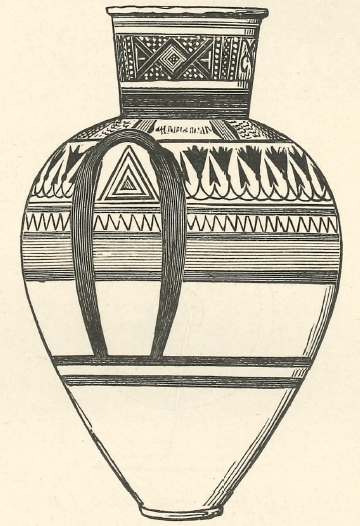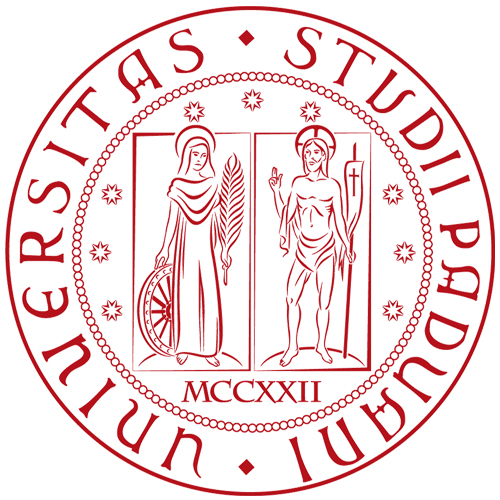
PHRC047 : Dedication to Arsinoe Philadelphos, Salamis - Cyprus (270-240 BC) Dedication
Permanent ID http://s.phrc.it/phrc047
Images
Photo 1: Drawing of the amphora, from Palma di Cesnola

Text constituted from: A. Palma di Cesnola 1884, p. 230.
Other editions:
See also: Mitford 1938, p. 30, cat. b; Salamine XIII 63; Nicolaou 1993, p. 227, cat. r; Anastassiades 1998, p. 140, no. 25; Caneva 2014, p. 96, 113, no. 39.
Images: A. Palma di Cesnola 1884, p. 230, figs. 266 (the vase) and 268 (detail of decoration).
Further bibliography: on Ptolemaic Salamis, see Yon 2014, p. 38-40. On Cypro-archaic painted funerary amphoras from the necropoles of Eastern Cyprus, see Myres 1914, p. 76-77, nos. 608-610, and p. 86-87, nos. 696-702; Pieridou – Karageorghis 1963; Karageorghis 1969, p. 125-127 and Pl. 64; Yon 1976, p. 208; Karageorghis 2000, p. 91, no. 143. On the necropoles of Salamis in the geometric and archaic periods, see recently Fourrier 2018, p. 132-134. On the collecting methods of the Cesnola brothers in the Salamis area, Marangou 2000, p. 246-248; see also the references to the life of Luigi Palma di Cesnola gathered on the website of the British Museum, and the commentary to PHRC046. On genitive dedications for Arsinoe Philadelphos, see Caneva 2014a and 2020a.
Online record: PHI
This is the only vase bearing a dedication to Arsinoe Philadelphos of a type other than the Alexandrian oinochoai of Ptolemaic ruler cults. The puzzling aspect of this object is that for its shape, size, and decoration it closely resembles the well-known painted funerary amphoras from the Iron Age necropoles of Eastern Cyprus, dated to the period Cypro-Archaic I (c. 700-600 BC). Various comparable specimens of this period are preserved at the Cyprus Museum in Nicosia (Pieridou – Karageorghis 1963; Karageorghis 1969, p. 125-127 and Pl. 64; Yon 1976, p. 208). The Cesnola collection at the Metropolitan Museum also counts several amphoras of this type, many of which come from the Salamis area (Palma di Cesnola 1903, Vol. 2, Pl. CIX, no. 871 = Karageorghis 2000, p. 91, no. 143; Myres 1914, p. 76-77, nos. 608-610, and p. 86-87, nos. 696-702; another specimen, now lost, is mentioned in Palma di Cesnola 1884, p. 230).
Since this type of amphoras is not known after the end of the Cypriot Archaic period, it is difficult to explain why a vase of this type would have been dedicated to Arsinoe II in the 3rd cent. BC. A first hypothesis to explore is that, possibly like a dedication to Kleopatra VII from Salamis belonging to the collection of A. Palma di Cesnola (PHRC046), this inscription could be a modern fake added to an archaic amphora found in a necropolis and sold to the Cesnola brothers. However, at the time of the Cesnola excavations at Salamis in 1874 the dossier of short dedications to Arsinoe Philadelphos was still a relatively small and obscure one (cf. Perdrizet 1894, p. 358 with a list of 6 already published specimens; among these, only those published in CIG and in LBW could already be known in 1874). Accordingly, there is little chance that such an inscription would be added to a vase to increase its appeal on the market, even more so considering that the size and refined decoration of our amphora already made it an attractive piece of art for a collector. An alternative hypothesis is that the amphora was an archaic one reused and dedicated to Arsinoe in the early Hellenistic period, or, as already proposed by A. Palma di Cesnola 1891, p. 258-259 (Italian edition of the ‘Salaminia’ volume of 1884), an Hellenistic production following an archaic decorative model. If this was the case, this amphora would confirm a well-known Cypriot tendency to receive external influences and to reshape them in compliance with local traditions.
While the historicity of these interpretations remains impossible to assess, it is worth exploring the possible use of this amphora in relation to the cult of Arsinoe Philadelphos. To begin with, it seems improbable that this vase was dedicated to the deified queen with the specific purpose of becoming part of a tomb’s goods. Ptolemaic oinochoai of ruler cults have often been found in funerary contexts, but they were primarily conceived to be used during rituals for the Ptolemies and only later became part of the funerary goods of the subjects, a detail revealing the prestige of ruler cults in the 3rd cent. BC (cf. commentary to PHRC012). A more appealing hypothesis is that this large vase was originally employed to store edible goods used for the cult of Arsinoe. Neither the social type of agents involved (priests, a cultic association, etc.) nor the process of collecting such goods for a ritual purpose can be better identified. However, the dimension and rich decoration of the object suggest that it probably did not belong to a domestic cult.



